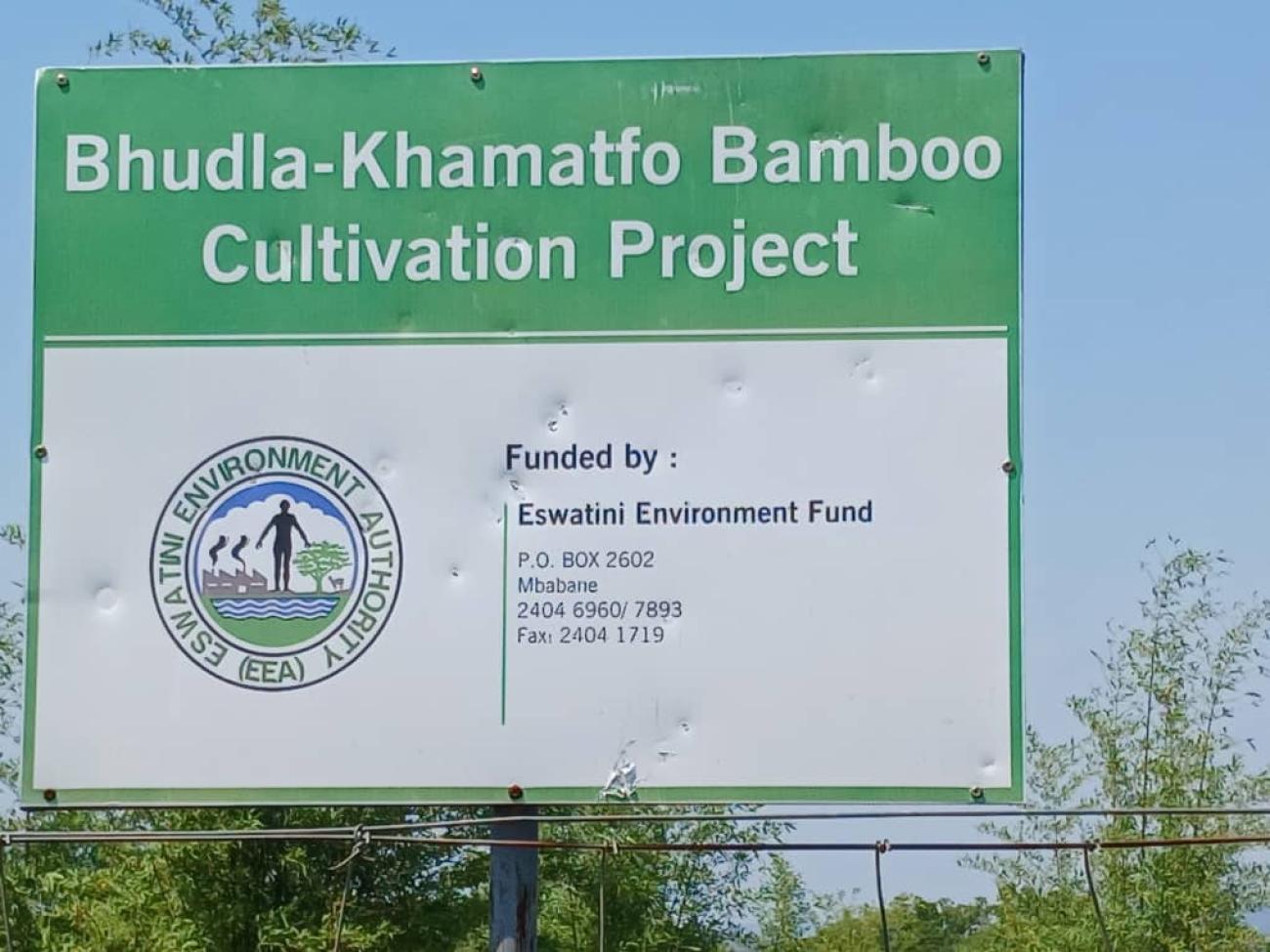Bamboo Dreams: The Struggles and Hopes of Mafutseni’s Women Farmers

Eswatini Bamboo Cultivation Project at crossroads
In 2018, a group of 30 determined rural women (and a few men) from three chiefdoms under Mafutseni Inkhundla came together with a shared goal: to grow bamboo for commercial purposes. Supported by the Eswatini Environment Fund under the Eswatini Environment Authority (EEA) and other development partners, they secured 5 hectares of land from KaBhudla and Khamatfo Chiefdoms and fenced it. Their excitement grew as they planted 600 Bambusa balcooa seedlings—a bamboo species valued for its strength, ideal for construction, furniture making, and scaffolding.
Fast forward to 2024, and the once-thriving group has dwindled to less than 10. Fatigue, frustration, and confusion have replaced the initial enthusiasm. Despite their best efforts, the bamboo is now ready for harvest, but the women are unsure how to turn this hard-won victory into financial rewards.
For six years, the women toiled under challenging conditions, with no access to reliable irrigation. “If you could see our heads, you'd be shocked. We’re balding from carrying 20-liter containers of water every day,” says Dumsile Dlamini, chairperson of the Bhudla-Khamatfo Bamboo Association. “Each plant needs 20 liters of water daily, and it’s exhausting because the dam is not close.”
In 2021, UNICEF installed a borehole during the COVID-19 pandemic. However, it did little to ease their burden as the women still rely on buckets to water the bamboo. “Even with the borehole, we still have to carry water by hand,” Dumsile adds, frustration evident in her voice.
The bamboo, now surrounded by weeds, reflects the toll the project has taken. "We didn’t realize it would take this long to harvest, and we’ve lost both interest and members," Dumsile explains. Internal conflicts have further complicated the situation. Despite visits from the World Food Programme (WFP), the Ministry of Agriculture, and local leaders, disagreements persist about how to move forward.
Some members believe the next step is to establish a processing plant for bamboo products, including toothbrushes, desk pads, and calculators. However, they admit they have no knowledge of the equipment required or the associated costs. Others prioritize solving the water problem, suggesting a solar-powered borehole and drip irrigation system to ease the burden and enable intercropping with vegetables. “There’s so much potential here,” says one hopeful member, “If we had proper irrigation, this place would be buzzing with activity.”
WFP and UNCT Engagement
In response to an invitation from one of the women farmers, a WFP team, accompanied by representatives from the Office of the UN Resident Coordinator, visited the bamboo project. During the visit, they observed firsthand the challenges the women face, from the lack of irrigation to the unresolved conflicts within the group. While it is not yet clear how the UN will be involved, WFP is expected to present a report to the UN Country Team (UNCT) to explore potential areas of support.
Bamboo’s Economic and Environmental Potential in Eswatini
The struggles of the Bhudla-Khamatfo women are a reflection of broader challenges facing bamboo farming in Eswatini. A recent report highlights bamboo’s versatility as a non-timber forest product with a wide range of uses, from construction to fuel production. Globally, bamboo has gained recognition as an eco-friendly alternative to timber, offering solutions to industries like furniture making and agroforestry. In 2019, Eswatini earned over SZL 5.2 million from bamboo exports, mostly to South Africa. However, the COVID-19 pandemic disrupted trade, causing a significant decline in subsequent years.
Bamboo also holds great environmental potential. It grows rapidly, requires fewer resources than traditional timber, and can help rehabilitate degraded lands—an essential consideration in Eswatini, where deforestation and biodiversity loss are pressing concerns. However, as seen with the Bhudla-Khamatfo project, turning bamboo’s potential into reality is not without its challenges.
The Need for Infrastructure and Capacity Building
While bamboo has significant economic and environmental benefits, the report emphasizes the need for more investment in processing facilities and capacity building in Eswatini. Without proper infrastructure to process raw bamboo, the value chain remains incomplete, leaving farmers like the Bhudla-Khamatfo women unsure of how to proceed.
“There’s a need for more investment in local processing plants,” says Bonsile Dlamini, Communications Editor at the Ministry of Agriculture. The Ministry is currently negotiating partnerships with organizations like the Correctional Services and St. Joseph’s School in Manzini, which already have some bamboo processing capabilities. “We’re working to ensure that these women don’t lose out on the opportunities bamboo farming can offer,” Bonsile adds.
While the Ministry explores these partnerships, the women remain divided—some focused on solving the water issue and others dreaming of a fully-fledged processing plant. Both approaches offer promise, but unity is needed to make meaningful progress.
The Road Ahead
The Bhudla-Khamatfo Bamboo Association’s journey is one of resilience. Despite the physical and emotional toll, the remaining members remain committed to seeing their project succeed. Their struggles mirror the broader issues facing bamboo farming in Eswatini—a sector full of potential but hampered by a lack of infrastructure, technical expertise, and clear direction.
Bamboo offers enormous economic and environmental benefits, as shown by successful projects in countries like Rwanda and South Africa. For Eswatini to capitalize on this potential, investments in local capacity, processing industries, and sustainable irrigation solutions are critical. With the right support, the Bhudla-Khamatfo women could become pioneers in a thriving bamboo industry, benefiting both their community and the nation.
As they wait for developments and continued support from stakeholders, one thing is certain: their dedication remains steadfast, and their dream of transforming bamboo into a sustainable livelihood is still within reach.








